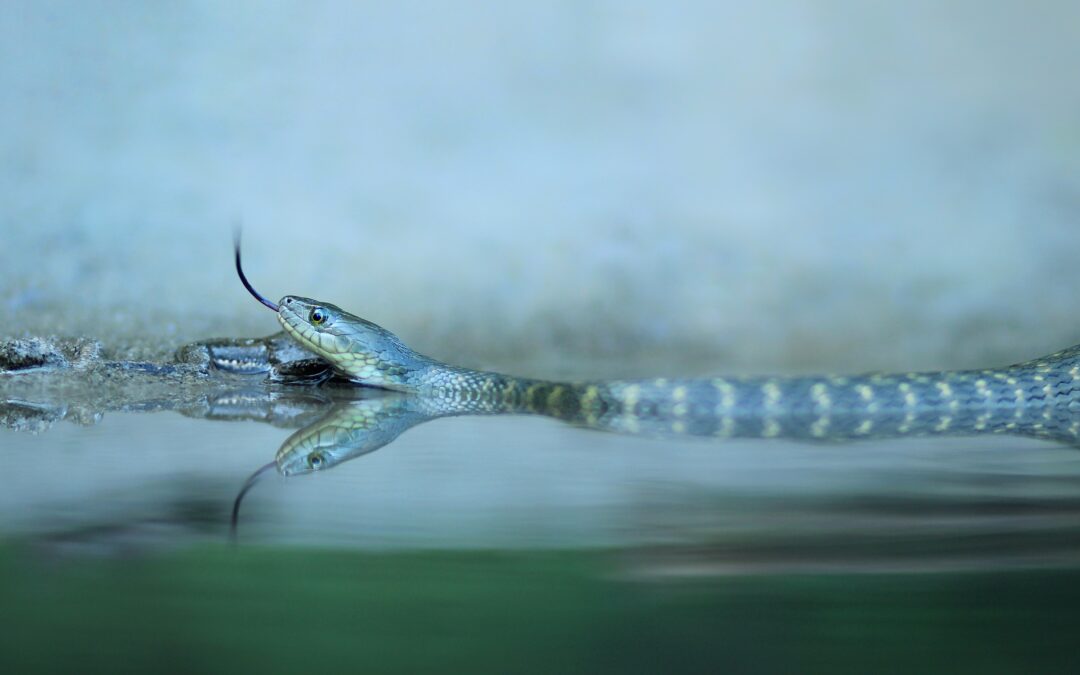What are water snakes in Texas?
Water snakes in Texas are a type of aquatic snake found throughout the state. There are many different species of water snakes that can be found living in and around freshwater bodies such as lakes, rivers, streams, and ponds. These snakes typically have dark gray or brown coloration with blotches down their back and sides. They range from 2-5 feet in length and feed on amphibians, reptiles, fish, crustaceans and even insects. Water snakes are usually non-venomous and harmless to humans, however they may bite if startled or provoked. It’s important to keep your distance and leave them alone when encountered in the wild. With proper respect for their habitat.
Overview of water snakes in texas
Water snakes are common throughout much of Texas, particularly in habitats like rivers, streams, canals and lakes. They come in a variety of colors ranging from dark gray to brownish hues and have blotches running down their back and sides. Typically reaching two to five feet in length, water snakes feed on amphibians, reptiles, fish, and insects. They a
Most water snakes found in Texas are non-venomous, however the Western Cottonmouth (Agkistrodon piscivorus leucostoma) is an exception, as it’s one of only four venomous species native to the state.
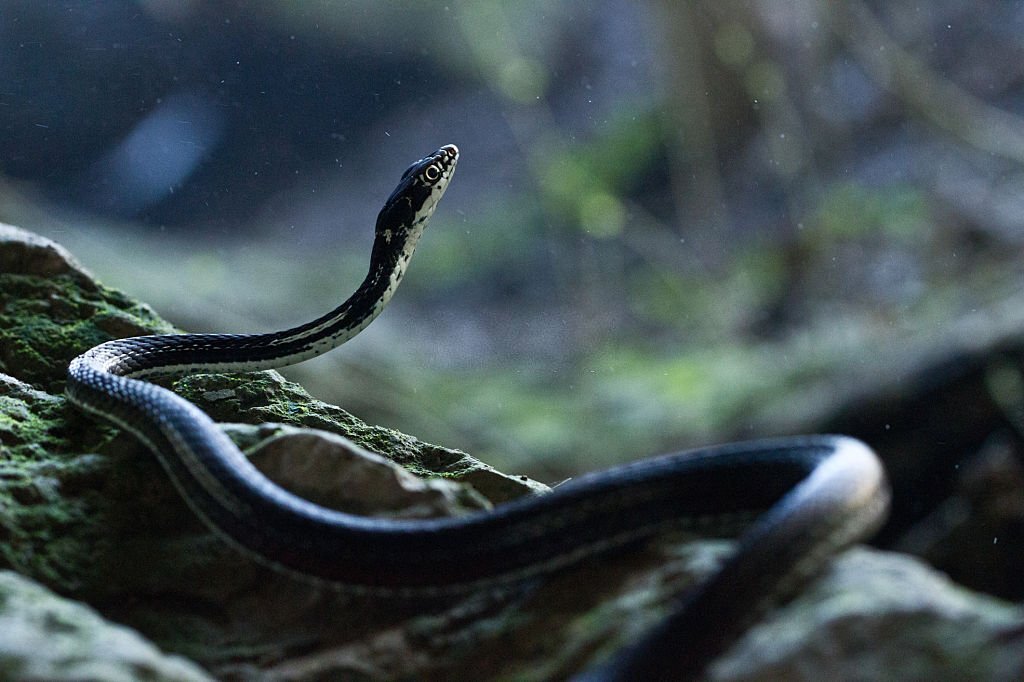
Physical Features and Behavior water snakes in texas
Water snakes in Texas have an elongated, cylindrical body with a broad head and neck. They can have varying patterns of blotches, stripes or solid colors on their bodies, which help them blend into their environment. Their diet consists mainly of prey like frogs, salamanders, small mammals, fish, and insects. They are usually active at night and during the day, and can be found in bodies of water such as ponds, rivers, or lakes. Some species have been known to climb trees near water sources in order to capture prey.
Water snakes in Texas may also display defense behaviors when they feel threatened. These can include raising their head off the ground, flattening their body and hissing. If these behaviors do not scare away the threat, they may bite or attempt to flee.
Habitat and Diet of water snakes in texas
Water snakes in Texas typically inhabit slow-moving bodies of freshwater, such as ponds, streams, lakes and marshes. They may also be found near brackish water sources or even saltwater marshlands along the coast.
The diet of water snakes in Texas mainly consists of amphibians and fish. However, they may also feed on insects, crayfish and other invertebrates. Additionally, they prey upon other snakes, small mammals and birds.
Water snakes in Texas will often bask on rocks or logs near the water’s edge as well as climb branches or foliage to avoid predation. To thermoregulate their body temperature, these snakes may also enter the water and stay submerged for a period of time.
Water snakes in Texas are non-venomous and generally shy away from humans. If confronted, they will usually flee, but may become defensive if cornered or harassed. To protect themselves, these snakes may coil their bodies, flatten their heads or hiss loudly.
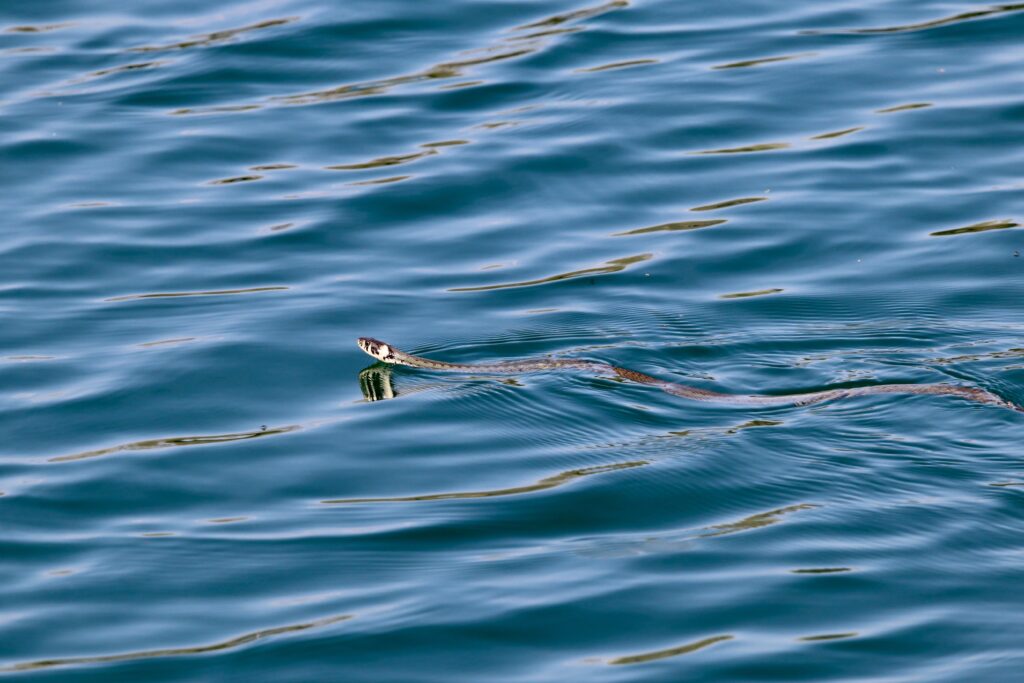
Relationship of Water snakes in Texas with Humans
The relationship between water snakes in Texas and humans is generally one of avoidance. While these snakes are non-venomous and not typically aggressive towards humans, they will flee or become defensive if provoked. However, some people in Texas may find it beneficial to have the presence of water snakes around, as they can help to control populations of small rodents and other pests. It is important to remember that all wildlife, including water snakes, should be respected from a distance and not harassed or disturbed as this can put both humans and the snake at risk of injury.
Comparison of water snakes in texas to other snakes
Water snakes found in Texas can vary greatly from other species of snakes found elsewhere. Typically, they are non-venomous and not aggressive towards humans. However, their behavior is often more defensive than some other types of snakes, as they will flee or become defensive if provoked. In comparison to venomous snakes in other parts of the world, water snakes in Texas tend to be more tolerant of humans and can even sometimes be seen basking in the sun near roads or trails. As a result, it is important for people to learn how to differentiate between water snakes and venomous species when outdoors, as both types can inhabit the same areas.
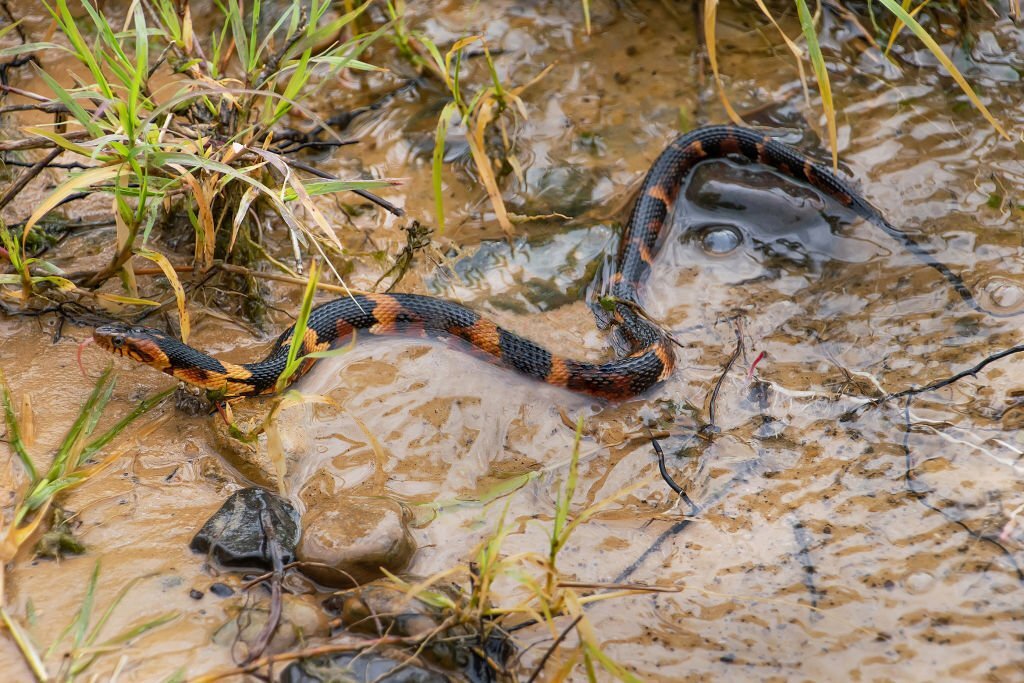
Closing thoughts on water snakes in Texas
Water snakes in Texas are an important part of the local ecosystem, helping to keep aquatic populations healthy and balanced. Although they can be slightly more defensive than other types of snakes, these non-venomous reptiles do not pose a threat to humans. With increased awareness on how to distinguish between water snakes and venomous species when outdoors, people can appreciate these animals from a safe distance and continue to enjoy the natural beauty of Texas.
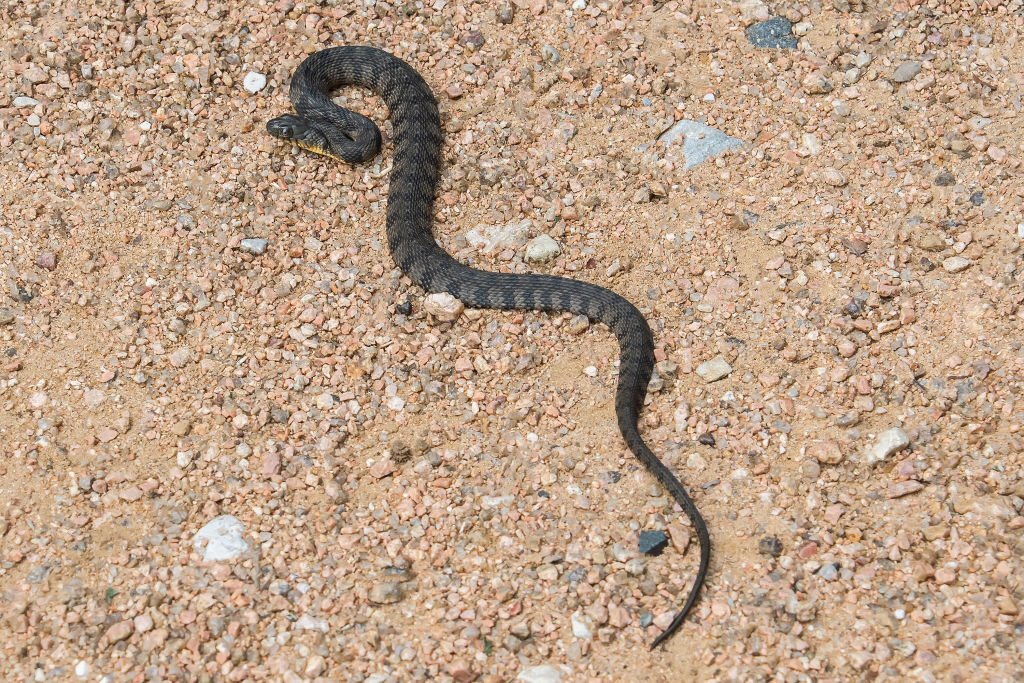
FAQs – Frequently Asked Questions
Are water snakes in Texas poisonous?
No, water snakes in Texas are not poisonous. Although they may look like venomous species, these reptiles are non-venomous and do not pose any danger to humans. It is important to be able to identify between water snakes and other snake varieties from a distance, as some species of water snakes can be more defensive when disturbed.
Do all lakes in Texas have snakes?
No, not all lakes in Texas have snakes. Although some areas may be home to aquatic species of snakes, many lakes and other bodies of water do not have any snake populations living nearby. It is important to pay attention when wading or swimming in unknown waters to make sure that any wild animals are given the space they need.
Are water snakes aggressive?
Water snakes can be aggressive if they feel threatened, but their behavior is generally mild. If a water snake is approached or touched by a human, it may become defensive and bite as a form of self-defense. It is best to observe water snakes from a distance if possible and not disturb any wild animals in their habitat. In some cases, water snakes may be more likely to attack if they are cornered or otherwise feel threatened. It is important for people to give wild animals the space and respect that they need in order to ensure everyone’s safety.
Is it dangerous to swim in areas where there are water snakes?
It is generally safe to swim in areas where water snakes are present, although caution should still be exercised. Water snakes tend to avoid people and may not even be noticeable when swimming in the same area. If a water snake is spotted while swimming, it is best to keep a safe distance and allow the animal to continue on its way. Some people may feel uncomfortable swimming in areas with water snakes, and in these cases, it is best to find another swimming area. Remember that wild animals should always be respected and never harmed or disturbed.
Is killing snakes illegal in Texas?
Killing snakes is illegal in Texas and it is a criminal offense punishable by law. In the state, all native snake species are protected and must not be harmed or killed, regardless of whether they are venomous or non-venomous. Additionally, it is prohibited to capture wild snakes for any purpose without an appropriate permit from the Texas.
Which part of Texas has the most snakes?
The part of Texas with the most snakes is East Texas, specifically areas along the Gulf Coast like Galveston and Houston. Areas that are close to water sources such as rivers and lakes tend to be more hospitable for snake populations because they provide ample food sources and warm temperatures. Additionally, many species of snakes can also be found in Central Texas, particularly within the Hill Country region. This area is known for its vast array of different habitat types and landscapes, which can be very attractive to snakes. Furthermore, snakes have also been documented in North Texas and West Texas, but their populations tend to be somewhat less prevalent. Overall, snake diversity and abundance across the state of Texas vary widely depending on the location, but all regions have some form of snake population. Appropriate management strategies such as habitat protection and education programs can help ensure that these important species continue to thrive in Texas for years to come.
Read an article on the Top 20 Snakes in North Carolina
Read more about the water snake

